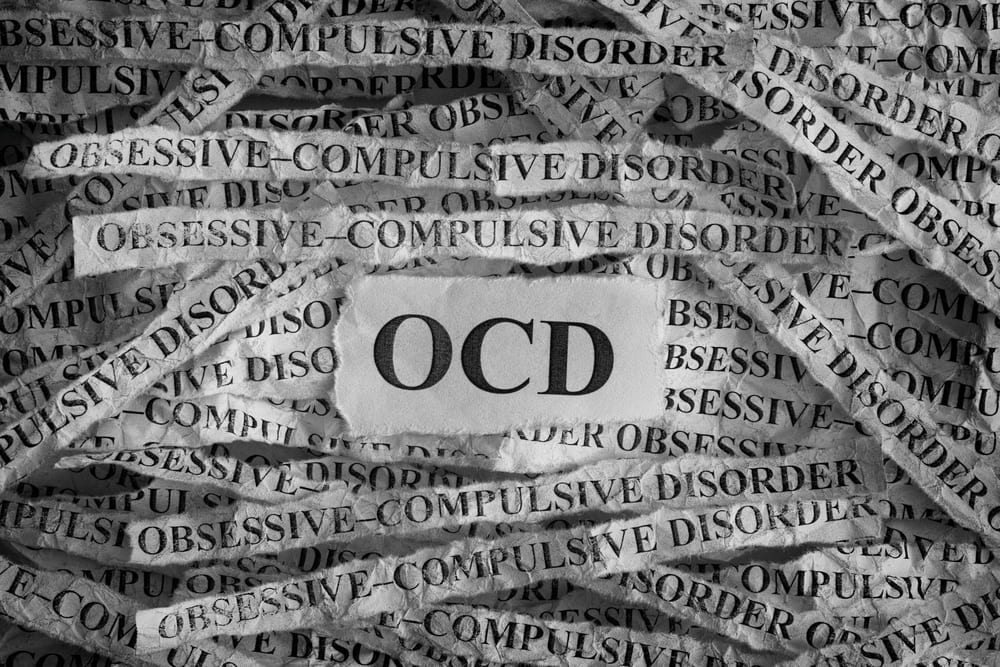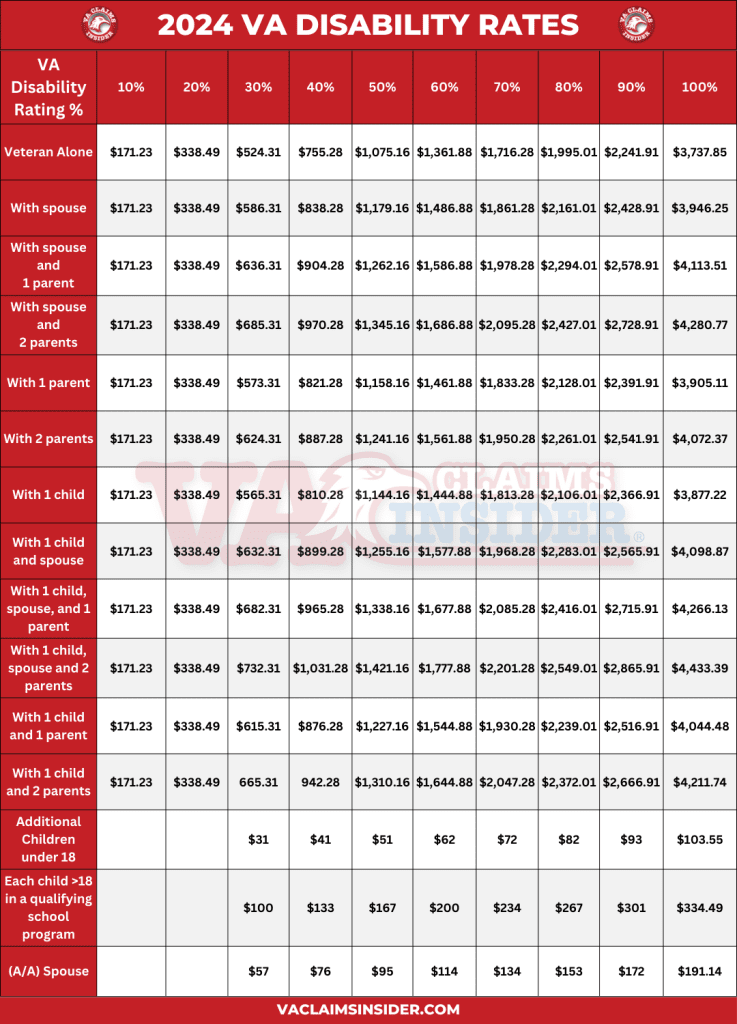Obsessive Compulsive Disorder (OCD) has unfortunately become a bit of a slang term for someone who tends to like things neat and tidy.
But those who have clinical OCD know it’s nothing to take lightly or joke about. It can ruin your ability to maintain healthy relationships and manage everyday problems.
Many veterans leave the military with OCD because of what they witnessed or experienced. We’ve guided thousands in getting the VA benefits they’ve earned, including for mental health conditions like OCD.
Keep reading to see if you qualify for an OCD VA rating and if you’re ready to take the next steps👇
Table of Contents
Summary of Key Points
- OCD is listed in the VA Schedule for Rating Disabilities under Diagnostic Code 9404 but is rated using the General Rating Formula for Mental Disorders.
- Depending on your symptoms, your OCD VA rating could be anywhere from 0% to 100%.
- To get an OCD VA rating, you need to be able to prove your military service caused your OCD or made it worse.
- If a disability that’s already rated by the VA caused your OCD or made it worse, you could be eligible for a VA rating for OCD as a secondary condition.
- You can lock in your VA effective date even if you don’t have an OCD diagnosis.

You DESERVE a HIGHER VA rating.
WE CAN HELP.
Take advantage of a FREE VA Claim Discovery Call with an experienced Team Member. Learn what you’ve been missing so you can FINALLY get the disability rating and compensation you’ve earned for your service.
OCD VA Ratings
VA ratings are based on the severity of your symptoms.
It’s a common misunderstanding that the VA rates disabilities. What they really rate are the symptoms produced by your disability. Generally, the worse your symptoms, the higher your VA rating.
The VA uses the General Rating Formula for Mental Disorders to evaluate what rating percentage your OCD symptoms may warrant.
This formula considers two main symptoms. The VA rates these symptoms at either 0%, 10%, 30%, 50%, 70%, or 100%:
- Occupational impairment. Does your OCD affect your work performance or keep you from maintaining a job?
- Social impairment. Does your OCD make it so you have a hard time in social situations and with maintaining healthy relationships?
Unfortunately, the rating formula is several dense paragraphs of run-on sentences.
To save you the headache, here’s a synopsis:
100%: Complete occupational and social impairment because of symptoms like:
- Serious problems with thinking or talking
- Ongoing false beliefs or seeing things that aren’t there
- Behaving very oddly
- Constant risk of harming oneself or others
- Sometimes not being able to do everyday tasks (like keeping clean)
- Not knowing what time it is or where you are
- Forgetting the names of close family, your job, or even your own name
70%: Less than complete occupational and social impairment because of symptoms like:
- Thinking about suicide
- Doing rituals that get in the way of daily tasks
- Sometimes talking strangely
- Feeling very scared or sad most of the time
- Struggling to control emotions (like being easily annoyed and sometimes acting violently)
- Not knowing where things are in space
- Not taking care of how you look or staying clean
- Having a hard time dealing with tough situations at work or in similar settings
- Finding it tough to make and keep good relationships
50%: Occupational and social impairment because of things like:
- Not showing much emotion
- Talking in a way that goes off track or sounds repeated
- Often feeling sudden and strong fear
- Not understanding complicated instructions well
- Not remembering things from short or long ago except for things learned well before
- Forgetting to finish tasks
- Not making good choices
- Struggling to think in creative ways
- Having mood swings that affect how you feel and act
- Finding it hard to make and keep good relationships
30%: Less severe occupational and social impairment. You might not do tasks as well for a short time, but usually, you do okay with normal daily activities like taking care of yourself and talking with others. This can happen because you might:
- Feel sad
- Worry or be overly cautious
- Have strong fear
- Often struggle to sleep well
- Forget small things like names, directions, or what happened recently
10%: Occupational or social impairment because of small or temporary issues that make it harder to do tasks when you’re really stressed, or you need to take medicine regularly to keep these issues under control
0%: A mental condition has been formally diagnosed, but symptoms are not severe enough either to interfere with occupational and social functioning or to require continuous medication.
How Much Are These VA Ratings for OCD Worth?
If you successfully win a VA disability rating for OCD, how much you get each month will depend on whether you’re married and have any dependents—and what VA rating percentage you are granted.
Take a look at the 2024 VA compensation rates below.

You can also use our 2024 VA Disability Calculator. This tool is great for estimating your combined rating if you have more than one rated disability.
Do You Qualify for a VA Rating for OCD?
When you file a claim for OCD VA disability, you’ll likely be asked to go to a Compensation and Pension Exam (C&P Exam).
This is an exam conducted by a VA physician or a private VA-contracted physician that evaluates the severity of your symptoms.
The physician giving you the exam will ask you about the symptoms listed above. They’ll want to know which of those symptoms you experience, how often you experience them, and how they affect your work performance and social life.
C&P Exams are very important. The VA places a lot of weight on the results and the physician’s notes when deciding whether or not to award you a rating.
They’ll also use that information to help them decide if your condition is “service-connected.”
How to Service-Connect Your VA Disability for OCD
Service connection means that something that happened during and because of your service is responsible for your disability. This sounds simple enough, but it can be difficult to prove.
Proof of service connection requires these three things:
- A current medical diagnosis of your condition. The VA can’t rate a condition that hasn’t been formally diagnosed.
- Evidence of an in-service event, injury, disease, or aggravation. You need evidence showing that what you claim caused your disability actually happened. This evidence can be military medical records or lay statements from people who were there.
- A “nexus” (or link) between #1 and #2 via competent medical evidence. If you get a nexus letter, this link will usually be expressed using one of these statements of probability:
- “Is due to” = 100% certain
- “More likely than not” = greater than 50% certain
- “At least as likely as not” = equal to 50% certain
- “Not likely due to” = less than 50% certain
- “Is not due to” = 0% chance
These three elements make up what is known as the Caluza Triangle.

Video to Learn More About Service Connecting Your OCD👇
What Counts as an In-service Event, Injury, or Illness?
Thanks to medical research on the subject, more and more evidence is coming out that suggests OCD can be developed after experiencing a traumatic event.
This is known as trauma-related OCD, and it’s estimated that anywhere between 1% and 5% of veterans have it.
Trauma-related OCD in veterans often presents with symptoms such as:
- Intrusive thoughts. This looks like focusing on possible future negative scenarios or outcomes.
- Repetitive behaviors. These behaviors can be:
- Done to prevent imagined threats from occurring
- Sense of magical thinking connecting action and what it is preventing
- Rigid sets of rules and patterns
- A strong sense of self-doubt and/or not doing it “right” that leads to repeated behaviors
- Avoidance. Avoiding situations where compulsions may be triggered, or obsessive thoughts brought on.
Like countless other veterans, you may have been exposed to traumatic events during your time in the military.
Vietnam, the Gulf War, and the Global War on Terrorism have exposed service members to things like:
- IED blasts
- Gunfire
- Dismembered body parts
- Prolonged periods of imminent danger
- Assault
- Indirect fire
- Vehicle and aircraft crashes
- Long periods in harsh, austere environments
- Life-threatening illnesses
As long as it took place during and because of your service, an event like the ones above can meet the criteria for an in-service event, injury, or illness.
Examples of Trauma-related OCD
The VA has published case studies of veterans who develop OCD after experiencing a traumatic event.
One such study examines how “Mrs. A” developed OCD after being sexually assaulted.
Mrs. A served 10 years overseas while in the Air Force. To distract herself from her trauma-related thoughts while deployed, she often showered upwards of 10 times a day. She replaced the sensation and thoughts of the perpetrator’s hands on her body with hot water and scrubbing.
After returning home, she continued her showering habit despite no longer having intrusive memories of the trauma. Her showering ritual involved detailed, specific routines that had to be done for her to “feel clean.”
Sometimes after showering she felt a sense of not having done it correctly, so she showered for over an hour at a time until she felt she did it perfectly.
She also avoided watching sexual content on TV because doing so brought on the feeling she needed to shower again.
At first, Mrs. A used showering to distract herself from trauma-related thoughts. But her showering eventually developed key features of OCD such as having to be done in a specific, ritualistic manner.
Furthermore, she eventually stopped using showering to distract herself from her thoughts and instead began using them to reduce anxiety. Similarly, she began avoiding triggers that lead to her feeling the need to complete her showering compulsion.
Mrs. A meets criteria for trauma-related OCD.
Secondary Service Connection for OCD
If service-related trauma isn’t responsible for your OCD, it’s possible another disability is. When that other disability is already rated by the VA, this is known as secondary service connection.
There are three types of service connection:
- Direct Service Connection: This is when you can show your service is directly responsible for your disability.
- Secondary Service Connection: This is when a disability already rated by the VA causes your condition or makes it worse.
- Presumptive Service Connection: If you have a condition on the list of presumptive conditions, you don’t have to prove the second part (#2) of the Caluza triangle.
OCD is not on the VA’s list of presumptive conditions. So, if your service is not directly responsible (i.e. direct service connection) for your OCD, your only other option is to pursue an OCD VA rating secondary to another condition.
Here is a short list of conditions that research shows may lead to OCD. All of these are also rated using the General Rating Formula for Mental Disorders:
- Anxiety disorders such as generalized anxiety disorder, social anxiety disorder, unspecified anxiety disorder, specified anxiety disorder, and Illness anxiety disorder (Diagnostic codes 9400, 9403, 9410, 9413, 9425).
- Depression disorders such as Persistent depressive disorder, Major depressive disorder, and Unspecified depressive disorder (Diagnostic Codes 9433, 9434, 9435)
- Post-traumatic stress disorder. (Diagnostic Code 9411)
If you have a VA rating for any of the above conditions and believe they may have caused your OCD, you should consider filing a claim for an OCD VA rating as a secondary condition.
Read our blog How to File a Secondary VA Claim Online (4-Step Process) to learn more about filing for an OCD VA rating as a secondary condition.

How to File a VA Claim for OCD
Read our post How to File a VA Claim – A Comprehensive FAQ Guide to learn more about what evidence you need to file a claim, what to do if your claim is denied, and how long the VA claims process usually takes.
Once you’re ready to file, read our post How to File a VA Claim Online (17-Step Tutorial) for detailed, step-by-step instructions for filing a claim for an OCD VA rating.
But first, you should submit an intent to file. This tells the VA that you plan to eventually submit a complete claim, but you need more time to gather your evidence.
After you submit an intent to file, you have one year to submit the rest of your claim before it expires.
Even if you don’t have a diagnosis for OCD, I recommend submitting an intent to file as soon as possible. Doing so will help make sure you have the earliest effective date for your benefits possible.
Your effective date is the date you become eligible for VA benefits. If there is a difference between your effective date and the date you begin receiving VA benefits, you could have back pay coming your way.
How to Submit an Intent to File
There are THREE ways to submit a VA intent to file:
- You can submit VA Form 21-0966. Once completed, you can bring it to a VA regional office near you or mail it to:
Department of Veterans Affairs
Claims Intake Center
PO Box 4444
Janesville, WI 53547-4444
- You can also submit a VA intent to file over the phone. Just call 800-827-1000 Monday through Friday, 8:00 a.m. to 9:00 p.m. EST.
- Initiating a claim through the va.gov website also serves as an intent to file.
I strongly recommend submitting your VA intent to file using VA Form 21-0966 or through the VA website. This way you’ll have a paper trail to fall back on, just in case. Just like in the military–and any other government agency, for that matter–you should always keep a paper trail!

NEED MORE ASSISTANCE?
Most veterans are underrated for their disabilities and, therefore, not getting their due compensation.
At VA Claims Insider, we educate you on how to take control of the claims process so you may get the rating and compensation you’re owed by law.
If you’ve filed your VA disability claim and have been denied or have received a low rating—or you’re unsure how to get started—reach out to us!
Our process takes the guesswork out of filing a VA disability claim and supports you in building a fully developed claim (FDC)—so you may increase your rating FAST!
Take advantage of a FREE VA Claim Discovery Call. Learn what you’ve been missing—so you can FINALLY get the disability rating and compensation YOU DESERVE!

Clay Huston
Clay Huston is a former U.S. Army Reserves Blackhawk Pilot and officer. Clay enlisted in the Army in 2013 and was commissioned as a 2LT in 2017 after earning a business degree from the University of Illinois Champaign-Urbana.
Since separating from the military, Clay has pursued a career as a writer. He also runs the nonprofit notfatherless.org, which fundraises for Children’s Homes in Mexico.



